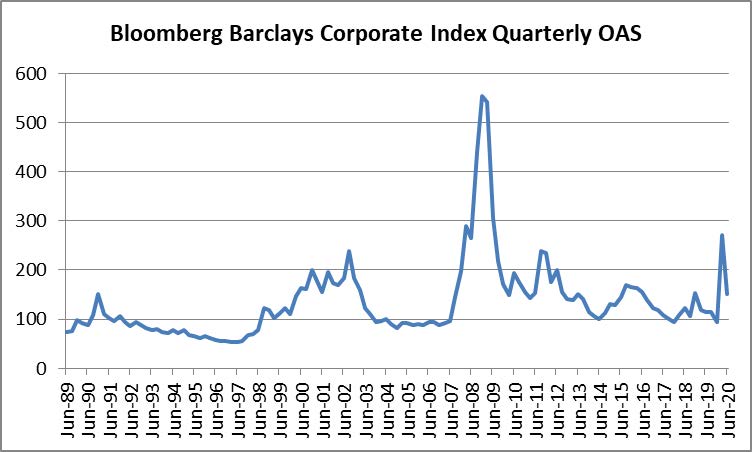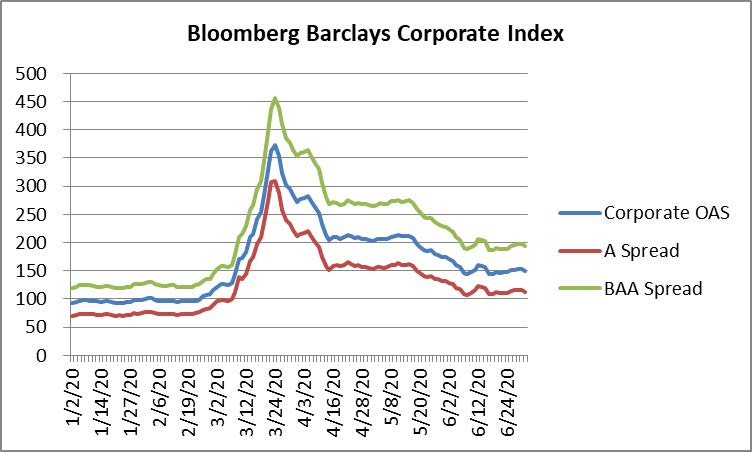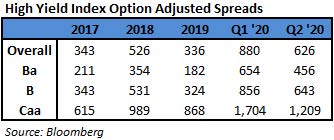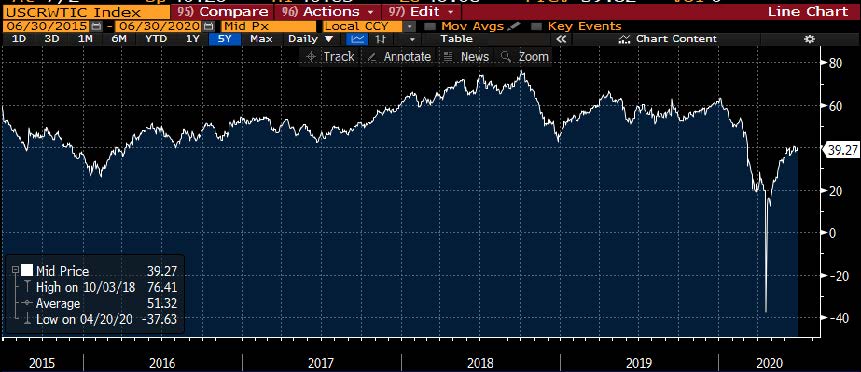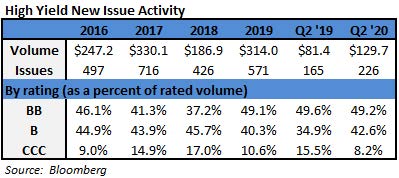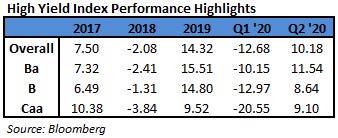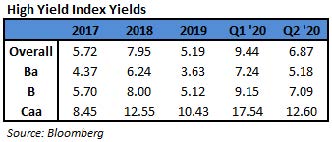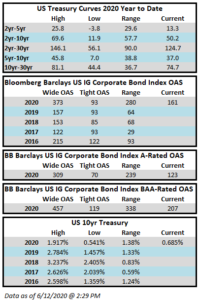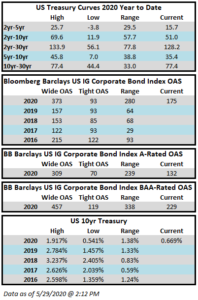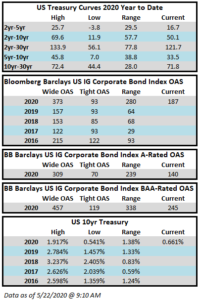Fund Flows & Issuance: According to a Wells Fargo report, flows week to date were +$1.0 billion and year to date flows stand at $30.9 billion. New issuance for the week was $6.7 billion and year to date issuance is at $220.3 billion.
(Bloomberg) High Yield Market Highlights
- S. junk bonds have notched up the biggest gains in six weeks as investors pour more cash into the asset class and the pace of issuance slows.
- Junk bonds spreads have tightened 39bps in the past week to 558bps more than Treasuries, the lowest in a month. The rally was fueled by “a slew of positive surprises on the economic front,” Barclays Plc credit strategists led by Brad Rogoff wrote in a note Friday. Yields dropped 42bps in the same period
- As primary activity winds down for the week, a group of banks led by UBS Group AG is looking to refinance a short-term loan for auto-parts maker BBB Industries that they funded in April amid volatility in credit markets
- The $240m secured junk bond that matures in five years may be sold as soon as Friday. Pricing discussions are for a yield of 10.25% to 10.5% including a discount
- Norwegian Cruise Line Holdings followed in the footsteps of Carnival to revisit the junk bond market as the pandemic keeps ships at dock. It sold $750m of senior secured bonds, up from $675m earlier, with a yield of 10.25% that was reduced from earlier pricing discussions in the 10.5% area. Orders reached more than $1.9b
- High- yield bonds with more than $61.5b outstanding are trading above upcoming call prices, making it attractive for issuers to redeem the securities in the next three months
- Netflix announced its 2Q earnings and dashed all hopes of another bond offering this year saying, “we have sufficient liquidity to fund our operations for over 12 months. As a result, we don’t expect to access the debt markets for the remainder of 2020 and we believe our need for external financing is diminishing”
- Netflix has come to the junk bond market every April and October since 2016
- Junk bonds posted gains of 0.17% on Thursday, the second straight session of positive returns. They’ve gained 0.99% for the biggest weekly jump since June 5
- Spreads and yields fell to about a four-week low of +558 and 6.16%, down 5bps and and 6bps, respectively
(Bloomberg) Update on Fed Buying
- The Federal Reserve has slowed down its purchase of corporate bonds as the functioning of markets has improved, to less than $200 million per day from around $300 million a day. It said that if market conditions continue to improve, it might slow its buying further, or perhaps even stop entirely. So far through July 8, the central bank has bought just $10.7 billion of corporate notes and related exchange-traded funds.
